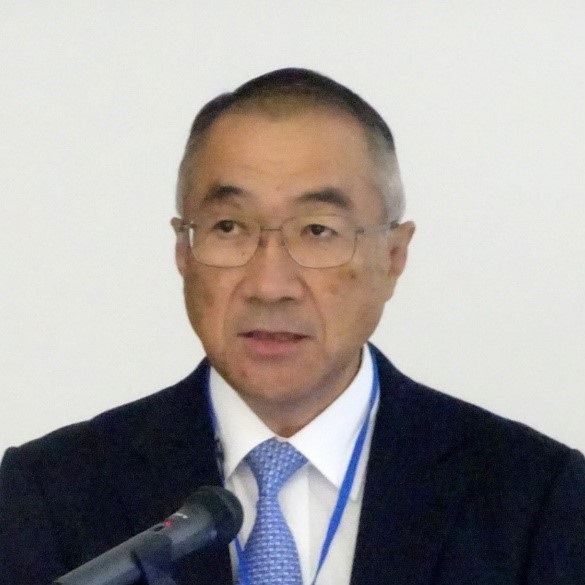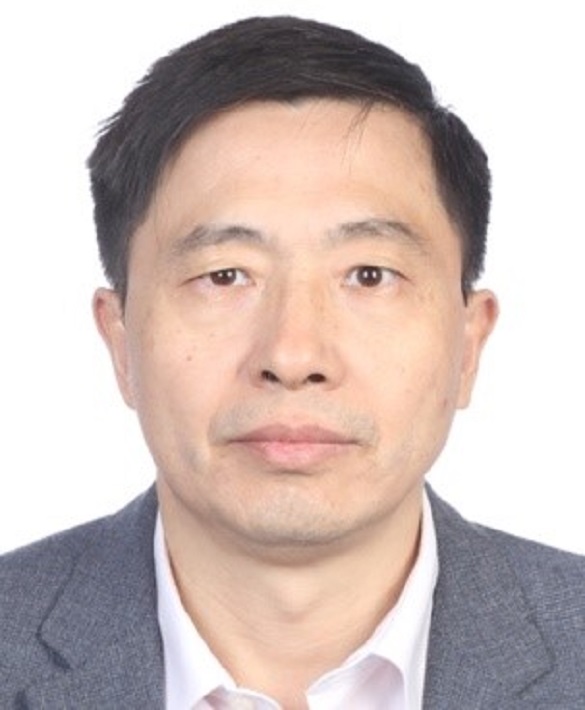Invited Lectures
Special Lecture
Title: Overview of IRID
R&D

Prof. Naoaki Okuzumi, JAPAN
International Research Institute of Nuclear Decommissioning
Abstract
For the decommissioning of the Fukushima Daiichi Nuclear Power Station (NPS), four organizations cooperate as one team. IRID is a complex entity consisted of eighteen organizations that play a leading role in research and development (R&D) for the decommissioning of the Fukushima Daiichi NPS. IRID is conducting R&D projects including the project of “Preparation of Fuel Debris Retrieval” and “Treatment and Disposal of Radioactive Waste”. IRID has developed three technologies for; 1. Intensive investigation for fuel debris and the damaged conditions inside the reactor, 2. Potential risk management and verification for the nuclear safety, 3. A reliable remote operation under high radiation environments.
As for the preparation of fuel debris retrieval, IRID is undertaking R&D projects based on three elements. Firstly, investigations using the cosmic-ray muon were performed. The distribution of fuel debris in the reactor was investigated from outside the reactor building by using the muon. The muon investigation showed that a large amount of fuel is less likely to remain in the reactor core. Secondly, detection technology that enables to directly access fuel debris in the PCV (Primary Containment Vessel) has been developed. Robots successfully entered the PCV at Unit 1. Investigation robots and devices for inside pedestal have been developed for Unit 2. Fuel debris investigation inside Unit 3 pedestal were performed by an underwater swimming robot. These robots and devices were remotely operated and successfully obtained visual data inside PCVs. Essential technologies for accessing fuel debris in the RPV or the PCV are currently developed. IRID aims to proceed with R&D for fuel debris retrieval.
Invited Talks - STSS 2020
Title 1:
Cryptography-based Security in IoT Era

Prof. Yasuyuki Nogami
Okayama University
Abstract
In the IoT/AI era, information security must support very wide area with a connection to networks. Particularly, small devices such as 16-bit microcontroller are utilized for realizing many functionalities such as sending/receiving sensor data, processing control signals, and data formatting/protecting. As an example, auto-driving is also one of important applications of utilizing IoT devices; however, it is a challenging problem for guaranteeing its secure and safe control based on cryptographies. In the talk, elliptic curve cryptography is introduced as an IoT device-friendly public key cryptography, together with some recommended parameters and calculation algorithms. Then, some implementation difficulties and attacks from a viewpoint of hardware security are introduced. Finally, some educational projects on information security in Okayama University that gives lectures and hands-on training for students in college and engineers in industry are introduced.
Biography
Education
Shinshu University, Japan : BC, MC,
and PhD in 1994, 1996, and 1999, respectively.
Experience
Okayama University
1. Professor 2017~
Information Security Engineering Lab.
Dept.
Communication Network Engineering,
2. Associate
Professor 2010~ 2016
Secure Wireless Systems Lab.
Dept. Communication Network Engineering
3. Research
Associate 2000~2015FY
Dept. Communication Network
Engineering
Research Topics
discrete
mathematics, finite field theory, symmetric/asymmetric
cryptography,
elliptic/pairing curve cryptography, IoT
security, AI security, side channel security, etc.
Invited Talks - ISOFIC 2020
Title 2: ****

Prof. ***
*** University
Abstract
***
Invited Talks - ISSNP 2020
Title 3: R&D
and Construction of China HTR-PM Demonstration Power Plant

Prof. Dong Yujie
Tsinghua University, CHINA
Abstract
China has been actively researching and developing modular high temperature gas-cooled reactor technology since the end of 1970s. A test reactor, 10 MWth modular High Temperature gas-cooled Reactor (HTR-10), was designed, constructed, commissioned at INET. The HTR-10 achieved its first criticality in the end of 2000 and full power operation in the beginning of 2003. A series of operational tests and safety demonstration tests have been done on HTR-10. On the basis of HTR-10, a High Temperature gas-cooled Reactor – Pebble-bed Module (HTR-PM) standard module has been designed by INET. The HTR-PM technical objectives are (i) demonstration of inherent safety features; (ii) demonstration of cost competitiveness; (iii) standardization and modularization and (iv) confirmation of proven technologies. The HTR-PM demonstration power plant (DPP) consisting of two HTR-PM modules is under construction in Shidao Bay, Rongcheng, Shandong province. The main characteristics of the design are shared together with the main project and construction achievements. The project has been supported by full scale testing under full HTR-PM helium conditions. All components, including two steam generators and two helium circulators, have been on the site and final installation of components is ongoing. The fuel development and testing information is also highlighted, including irradiation test of pebble fuel spheres and heating tests. The fuel production plant has achieved its design capacity and fuel elements for the initial cores of HTR-PM DPP have been produced. A commercial-scale unit, HTR-PM600, has been designed by a team led by INET. It comprises six standard modules which will be demonstrated in HTR-PM DPP. Several utilities in China are planning to deploy HTR-PM600 for replacing coal-fired power plant and cogeneration of steam and electricity. In order to realize high grade process heat application of HTR-PM, the intermediate heat exchanger etc. is being developed. Key technologies and components related to pilot-scale tests of hydrogen production are being developed.
Biography
Prof. Dong earned his Bachelor's and Master's degree in Fluid Mechanics, and PhD degree in Nuclear Engineering and Safety, Tsinghua University. Since 1997, he has worked to develop advanced nuclear reactors at the Institute of Nuclear and New Energy Technology (INET), Tsinghua University. He has served as the Head of the Division of Reactor Thermal-Hydraulic Calculation, Head of the Division of Reactor Physics, Thermal-Hydraulics and System Simulation and Head of the Division of General Design of HTGR. He was a visiting scholar in Forschungszentrum Juelich, Germany from 2000 to 2001. Currently, he is the Deputy Director and Deputy Chief Engineer of INET in charge of HTGR projects.




